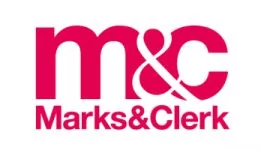Marks & Clerk protects innovation and ideas from brilliant minds. As noted in our previous article in this series on neurodiversity, our co-founder, George Croydon Marks, worked alongside the legendary inventor and businessman Thomas Edison. However, while Edison is famed for his achievements in science and technology, he is also recognised today for exhibiting many autistic traits. Related to this, and in light of the IP Regulation Board (IPReg) 2024 Diversity Survey, Marks & Clerk is highlighting the need to promote awareness and understanding of neurodiversity, to allow all team members to play to their strengths.
But how do we harness everybody's strengths within a team?
We believe that the key is to provide a culture and environment in which all individuals can thrive. In particular, an environment that allows barrier-free communication is a prerequisite to equal participation, as set out in the UN Convention on the Rights of Persons with Disabilities. At Marks & Clerk, this is supported by our long-standing values of Trust, Collegiality, Resourcefulness and Excellence.
For example, we believe that an accessible environment can be created by promoting:
- awareness that neurodiversity is widespread, e.g. 3-5% of people globally are thought to have ADHD, and about 1% are thought to have autism;
- acceptance of 'differences';
- knowledge that neurodiversity is often imperceptible: a neurodiverse person may superficially appear neurotypical; and
- awareness of interpersonal difficulties, such as the so-called 'double-empathy problem' between autistic and neurotypical people.
Regarding awareness, we note for example that autism does not – as originally thought – relate predominantly to boys having profound learning disabilities. Lorna Wing's ground-breaking research paper in 1981 taught that children with outstanding intellectual abilities, yet difficulties socializing, were also on the autistic 'spectrum'.
Additionally, research is now revealing that autism, especially in women and girls, is often carefully hidden using camouflaging skills such as 'masking' and 'mimicking'. The thought-provoking book "Autism and masking. How and why people do it and the impact it can have" (Sedgewick, Hull and Ellis) gives rise to the question: how many individuals fail to reach their full potential, in their family and professional lives, due to the huge daily effort required for camouflaging?
Similarly notable are questions arising from Sir Baron-Cohen's book "The Essential Difference: Men, Women and the Extreme Male Brain". He suggests that 'empathizing' (intuitively understanding what another person is thinking) has a statistical bias towards the female brain. On the other hand, 'systemizing' (e.g. to understand a natural science, engineered system or mathematical pattern) appears to have a statistical bias towards the male brain. However, he is emphatic that there is significant cross-over. This leads to the question: how many people, under pressure from gender-based prejudices to be emphathizers, hide their systemizing abilities? And vice-versa?
With a better understanding of the prevalence and gifts of neurodiversity, all of us can play our part in creating a culture and environment for equal participation. In the context of IP, this is essential for all of our teams, encompassing people with a flair for technical invention or artistic creativity, and equally those whose talents lie in vital support functions such as finance, HR, IT, marketing and systems administration.
Hence, and in this last article of our series on neurodiversity, Marks & Clerk pledges to continue playing its part in creating an IP world in which everybody can contribute their best. Just as we have done ever since our firm was first established in 1847, and when the great inventor Thomas Edison and our co-founder George Croydon Marks struck up their friendship.
The content of this article is intended to provide a general guide to the subject matter. Specialist advice should be sought about your specific circumstances.


